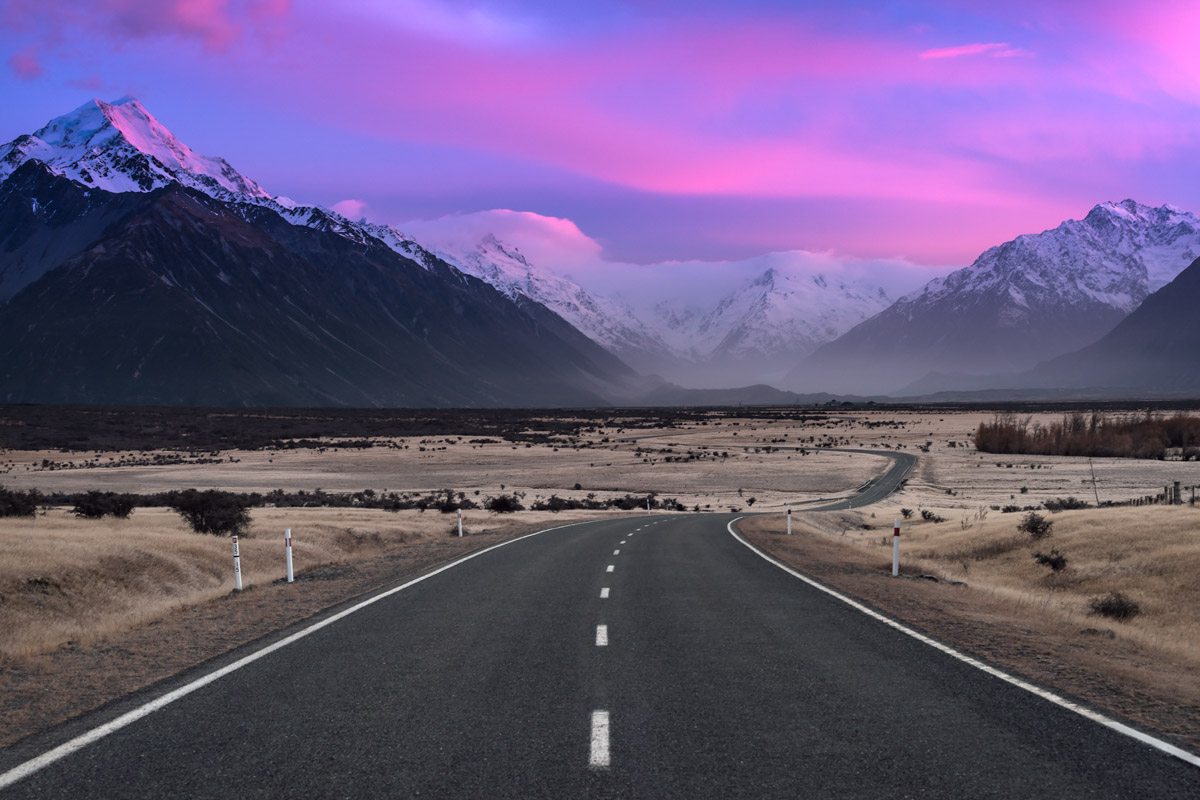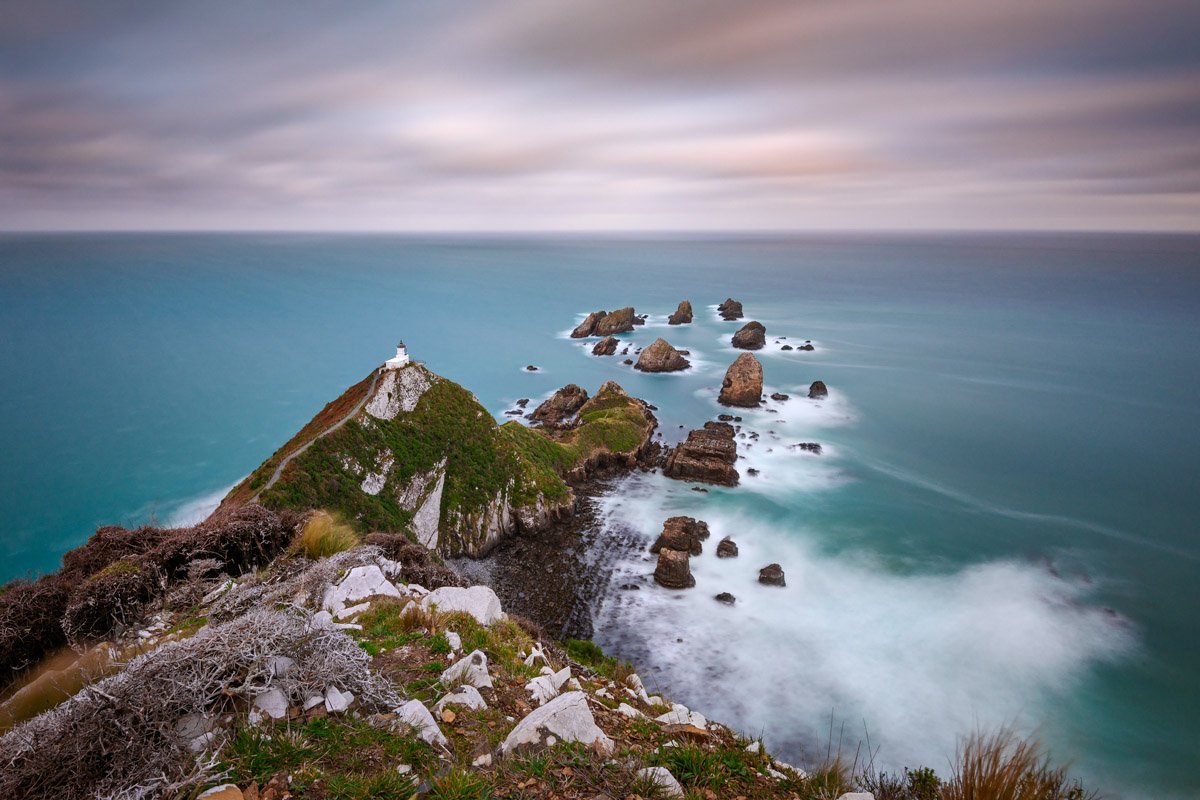My photography philosophy
‘Objective reality’ is sometimes defined as being the world that exists outside our minds. It’s the physical form of the mountains, the colour of the sky, and the way in which trees sway in the wind, as they exist independent of our senses and experience of them, unfiltered and free of interpretation.
In my time as a photographer I’ve come across a heap of people who think it’s: a) possible to capture objective reality with a camera, and/or; b) that photography should only be about capturing objective reality.
They seem to believe a camera only sees and records what exists in the ‘real’ world. That photography isn’t an art form. That light simply flows through a lens, passes through an aperture and shutter system, lands on a sensor and is converted to electrical impulses, runs through processors running complex algorithms, drops onto an SD card as a bunch of bits and bytes in a deconstructed reality, ready to be reassembled by more processors running complex algorithms and presented on a mobile phone, computer monitor, or a print. Of course, of all these steps are free from human influence and are uninhibited by mechanical and technological limitations and variances….
And that’s before we even begin to get into the whole topic of the human brain. Last time I checked most people had their own brain, each capable of interpreting and experiencing reality in different ways. And I think it’s safe to say we all know people who experience reality in completely different ways than us!

Some people’s reality is apparently more real than mine.
I think you know where I’m heading. Being able to record objective reality with a camera, then getting universal consensus the resulting image is indeed an accurate record of reality, is an exercise in impossibility. All photography is interpretation, by both the photographer and the viewer. All photography is subject to the variations and limitations of the equipment or media the image is recorded and displayed on. All photography is filtered, all photography is art.
The colour of that sky is, like, sooooo unrealistic.
The aim of my photography is simple: to recreate my experience of a scene. It’s not your experience. Or Sally’s experience. It’s mine, my interpretation. If we could somehow measure, in a quantifiable way, whether my images were an accurate representation of reality, would they pass that test? Probably not. I’d predict my photos are likely to be more colourful, more bold, quite possibly more ‘exciting’ than reality. But I guess that’s how I see the world, and that’s the world I want to show my viewers.
But clouds and water don’t look like that in real life! *cries*
That all said…..in broad terms I do like to be as faithful to reality (my version of it, haha) as possible.
I love the satisfaction that comes from nailing a scene which has been planned and dreamed of for a long time, without the need to ‘assemble’ the scene back at the computer. It’s a privilege to spend time in the great outdoors, watching the world go slowly by as I patiently await that perfect moment to click the shutter. (Which, by the way, doesn’t actually arrive a lot of the time. But the experience of being out there is plenty enough reward for me.)
A key thing to bear in mind is that the reality I’ve chosen to present tends to show a landscape looking at it’s best, usually the result of having returned to a location multiple times to capture the right light and conditions (i.e. I’ve discarded all the ‘bland’ versions of reality). The images I present certainly aren’t the result of rockin’ up in the middle of the day with an iPad and firing off a shot.
I do the large majority of my photography – probably 99% – as single frame exposures without the use of graduated filter systems. In that regard I’m helped by the Nikon D810, which does have a better dynamic range than most cameras (but still nowhere near as good as the human eye). Styles of photography and editing which provide dramatically better dynamic range than the human eye look ‘fake’ to me, and is therefore something I usually (but not always) choose to avoid.
No way the sand looks like that. I’ve been there and the brown was at least two shades browner.
I love the process of using Lightroom and Photoshop to enhance the raw image the camera provides me (which is a whole other topic of conversation – perhaps a future blog!). I use Lightroom to make various broad lighting and colour adjustments to an image (probably 60% of my effort). I then use Photoshop to make finer lighting and colour adjustments and make various clean-ups such as dust spot removal (remaining 40%).
I’m not a fan of ‘creating’ images. I don’t use Photoshop to add stuff in, stretch mountains, remove powerlines, replace skies, or other such manipulations which are fairly commonplace these days (but increasingly not revealed by many photographers). In cleaning up the image I might remove distractions such as people, litter, or things poking into the edge of the frame; things that any other moment might not be there.
I don’t mind using longer shutter speeds (including through using neutral density filters) to generate movement and smoothing of water and clouds. My brain tells me these images aren’t ‘real’, but for some reason they just look so darn good!
Personally I’m not a big fan of landscape photography which tends towards the surreal or super creative. (I’m not saying I don’t like some of these images, but rather that it’s not something that gels with my personal style.) I’m talking about the sort of stuff that uses super-saturated (or super-desaturated) colours, distorted perspectives, and processed with 383 layers in Photoshop. Or the sort where the moon, at 50 times it’s normal size, is copied and pasted on top of a setting sun. Again, I’m not arguing this isn’t a valid form of interpretation and art, and that some people do genuinely believe this represents reality. A different reality from mine, but that’s my point….everyone’s reality is different. Who am I to call you an idiot if you think the moon rises in front of clouds? (By the way, you’re an idiot if you think this. ).

That Tekapo Tree #SOOC #nofilter
Overall, what I’m trying to do is capture my experience of a scene, with the hope of passing my experience on to you. With time I’ve learnt to be much less offended when people call out my images as fake or photoshopped. All they’re really saying is that they experience things in a different way than me, and I’m fine with that. The world would be a boring place if everyone saw things the same way!
So what do you reckon? When does an image start looking ‘fake’ to you? If you’re a photographer, how do you choose to present reality? And most importantly, do you think the moon rises through the Earth’s atmosphere in front of the clouds?




What a great philosophy, the #noFilter conversation drives me nuts .. Incredible photography as always too .. Keep it up
Thanks Si! Definitely agree on the #nofilter discussion – I stay away from those threads as it’s an endless loop of people (on both sides) smacking their heads against brick walls. Every time I come across those conversations I can’t believe people are still arguing about it!
Agree completely with you. What people don’t realise is that their “great and untouched” photos taken with iPads and iPhones are processed as well by the device itself. I’d rather use my own creativity than a machines…
Haha, too true. The Apple products either do a large amount of processing and/or their screens enhance images a whole lot. I find it’s a big issue when trying to translate what I process on my PC over to mobile apps such as Instagram – the same images look so different on my PC and iPhone!
Yes, very much so. Just looked at some photos yesterday on FB that I posted on Instagram using the “Share on FB” feature on my PC screen. They look horrible ? So oversharpened. Looks ok on mobile device though.
I enjoyed and appreciate this conversation. While I don’t favor extreme manipulation, like dropping the Milky Way into a night shot, I also recognize that nothing is absolute reality once the light enters the lens. And if you shoot in infrared, you are capturing what the eye can’t see at all. Believability matters but it’s continuum. So some live and let live is in order.
I am fascinating by moving water. We humans never see moving water the way a camera can capture it as a point in time. Our eyes are fooled into seeing motion in a series of stills at 24fps; dogs aren’t fooled until the frame rate is seven times higher. So in truth, those silky water photos may be closer to the reality of human vision than the extremely sharp wave action photos. I love them both and neither is any person’s pure reality.
Great comments, Michael! I too am fascinated by moving water; I’ve always thought capturing some movement in a still image (through a long shutter) far better accords with my experience of having seen it, even though rationally I understand it doesn’t quite look like that.
Loved reading this ! You’ve put my thoughts into words and just such a good way to explain how some photographers think, why they post process photos and that everyone and what they see is interpreted differently. Great read!
Thanks Lauren, glad you enjoyed the read!